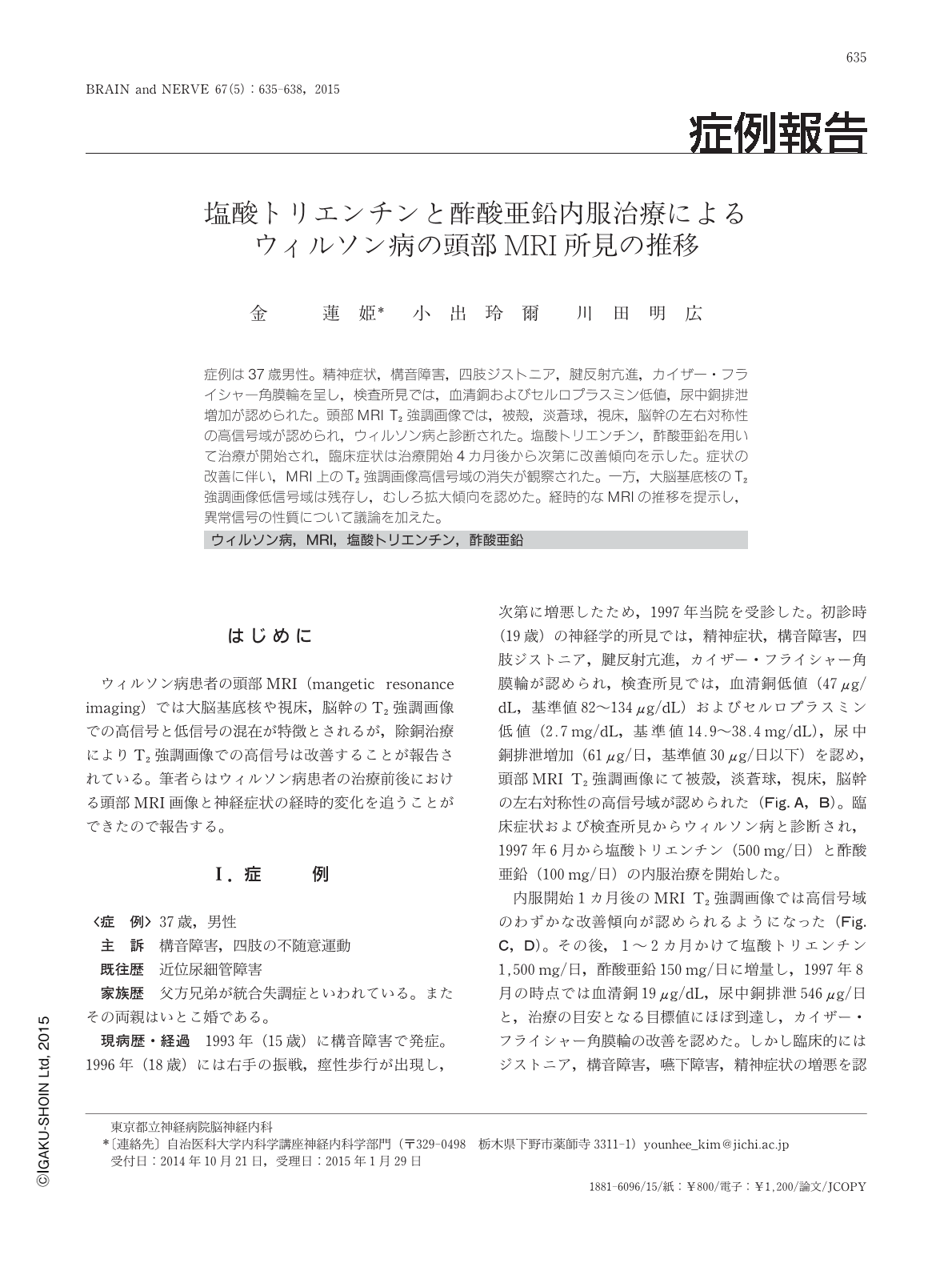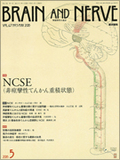Japanese
English
- 有料閲覧
- Abstract 文献概要
- 1ページ目 Look Inside
- 参考文献 Reference
症例は37歳男性。精神症状,構音障害,四肢ジストニア,腱反射亢進,カイザー・フライシャー角膜輪を呈し,検査所見では,血清銅およびセルロプラスミン低値,尿中銅排泄増加が認められた。頭部MRI T2強調画像では,被殻,淡蒼球,視床,脳幹の左右対称性の高信号域が認められ,ウィルソン病と診断された。塩酸トリエンチン,酢酸亜鉛を用いて治療が開始され,臨床症状は治療開始4カ月後から次第に改善傾向を示した。症状の改善に伴い,MRI上のT2強調画像高信号域の消失が観察された。一方,大脳基底核のT2強調画像低信号域は残存し,むしろ拡大傾向を認めた。経時的なMRIの推移を提示し,異常信号の性質について議論を加えた。
Abstract
A 37-year-old male patient presented with psychiatric symptoms, dysarthria, limb dystonia, increased tendon reflexes, and a Kayser-Fleischer ring in his late teens. Laboratory examinations showed decreased concentrations of serum copper and ceruloplasmin, and increased urinary copper levels. Magnetic resonance imaging (MRI) showed high-signal-intensity lesions in the bilateral putamen, globus pallidus, thalamus, and brainstem on T2-weighted images (T2WI). Based on the MRI results and laboratory data, we diagnosed this patient with Wilson's disease (WD). He was treated with trientine hydrochloride and zinc acetate. Four months after the initiation of treatment, the patient'symptoms began to improve. On a follow-up MRI that was obtained 6 years after treatment, the high-signal-intensity lesions on the T2WI had disappeared completely. However, the low-signal-intensity lesions in the basal ganglia had spread to the caudate nuclei. Here, we discuss the characteristics of the MRI changes in WD following treatment. The Pathological basis for the low-signal-intensity lesions on T2WI in WD remains unclear. Our results suggest that this lesion may reflect the accumulation of materials other than copper.
(Received October 21, 2014; Accepted January 29, 2015; Published May 1, 2015)

Copyright © 2015, Igaku-Shoin Ltd. All rights reserved.


